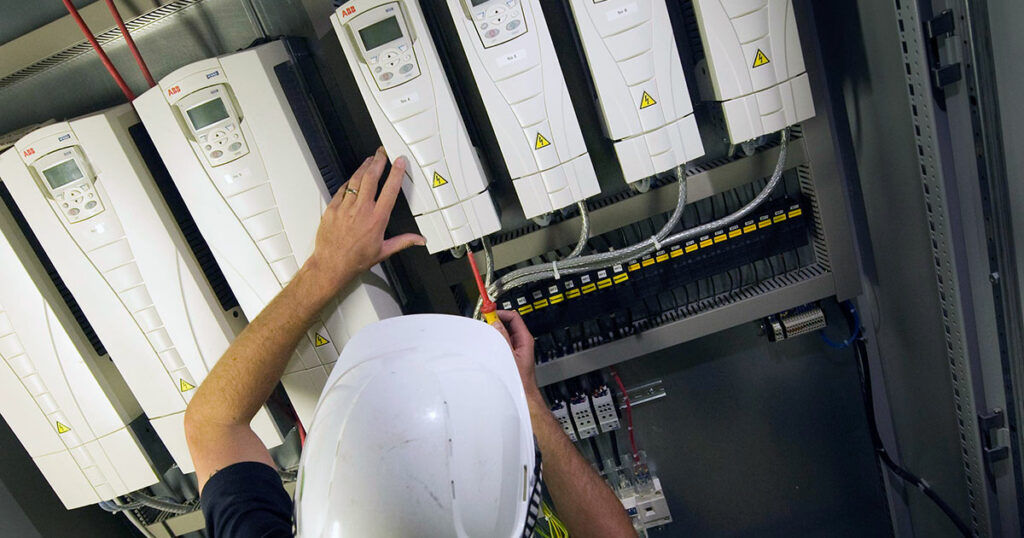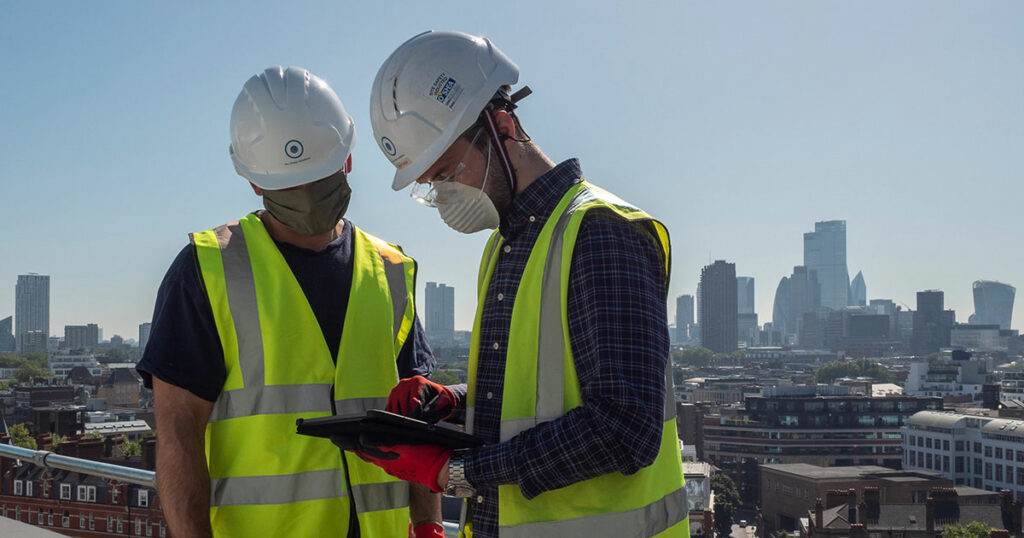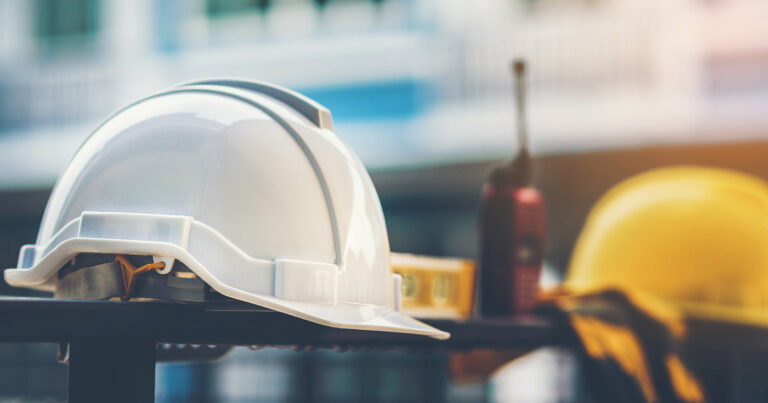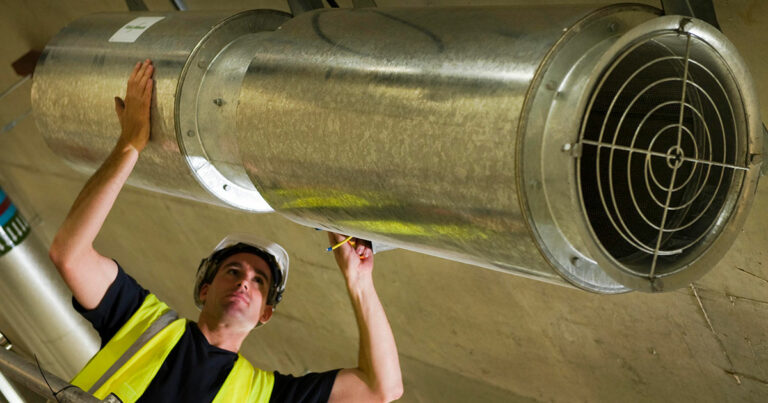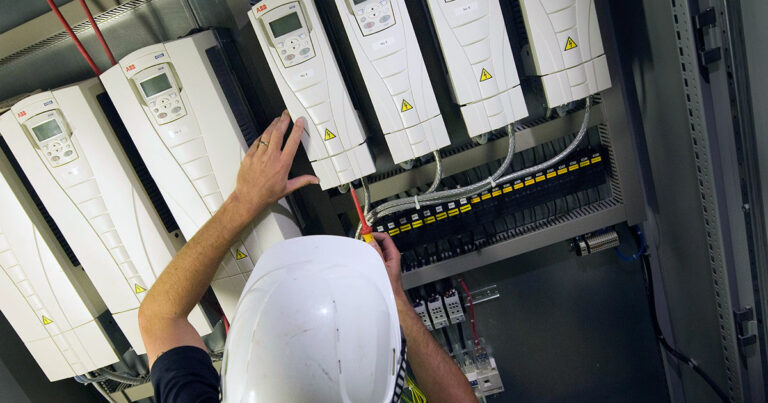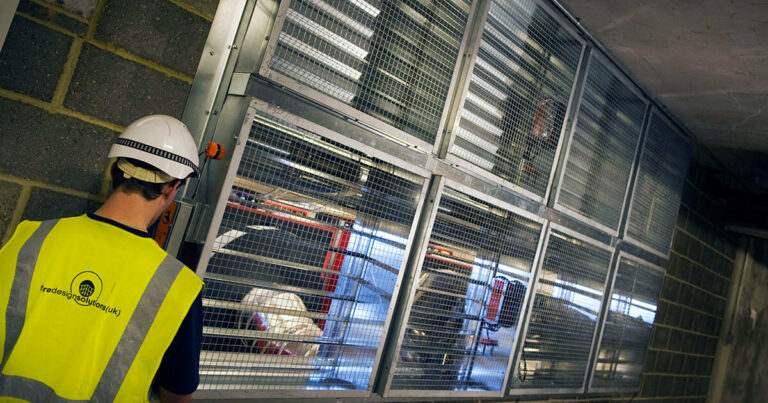Why Specialised Expertise Matters
Smoke Ventilation Maintenance vs Fire Alarm Maintenance: Why Specialised Expertise Matters
Building owners and facilities managers often assume that smoke ventilation maintenance is just another part of the fire alarm maintenance routine. In reality, smoke vent systems and fire alarm systems are entirely different life safety systems, each requiring distinct expertise and maintenance approaches. This article, explores the key differences between smoke vent maintenance and fire alarm maintenance – and why relying on a fire alarm contractor alone can be a dangerous oversight. We’ll also explain how to ensure your maintenance provider is truly competent to service both systems, keeping your building compliant and safe.
Two Different Systems, Two Different Skill Sets
At a glance, both fire alarms and smoke ventilation (smoke control) systems are critical fire safety installations – but they serve different purposes and have unique components:
- Fire Alarm Systems: Detect fire (via smoke/heat detectors or manual call points) and alert occupants with alarms. They comprise electronic devices like detectors, control panels, sirens, and strobes. Maintenance involves electrical testing – e.g. checking detectors and call points, verifying alarm sounders and lights, inspecting control panel functions and battery backup, etc.
- Smoke Ventilation Systems: Remove smoke or heat from a building during a fire to keep escape routes clear. These include Automatic Opening Vents (AOVs) such as smoke vents in roofs or walls, mechanical extract fans, smoke dampers, ductwork, and control panels that interface with the fire alarm. Maintenance involves mechanical and electromechanical checks – e.g. testing that vents open fully, fans start and achieve proper airflow, dampers close/open correctly, backup power (batteries or generators) works, and that sensors or interfaces trigger the system as designed.
Because the hardware and purpose differ, the maintenance tasks – and the expertise required to carry them out – are vastly different. It’s common in the past for building managers to bundle smoke control system upkeep together with fire alarm servicing as if they were the same thing.
However, industry experts warn that “there are vast differences in the skill sets of the people who know such systems best.”
A smoke control engineer’s expertise is very different from a fire alarm engineer’s – the former must understand airflow dynamics, pressure differentials, fans, vents and damper mechanics, in addition to smoke/heat detection, whereas the latter is typically focused on electrical detection and notification devices. In fact, a typical fire alarm engineer may not have the tools or training to perform crucial smoke vent maintenance tasks like measuring fan airflows or checking pressure in smoke shafts.
Key differences in maintenance requirements include:
- Equipment and Components: Fire alarm maintenance deals with sensors (smoke/heat detectors), alarm sounders, strobes, and electronic control units. Smoke vent maintenance deals with mechanical parts – vents, motorised actuators, fan units, smoke dampers, shafts – as well as their control panel and sensors. Each system’s parts demand specialised knowledge to inspect.
- Testing Procedures: A fire alarm service visit might involve triggering a few detectors or call points on each circuit, verifying the alarms and panel response, and checking battery health. In contrast, servicing a smoke ventilation system can involve actuating vents and observing them open/close fully, testing fans under load, measuring air speeds or pressure in smoke shafts, and simulating power failures to ensure backup systems kick in. These tests often require special tools (e.g. anemometers for airflow, multimeters for motors) and knowledge of ventilation performance criteria that fire alarm training doesn’t cover.
- Safety Objectives: The fire alarm’s job is to detect and warn, while the smoke vent’s job is to control smoke movement. Failure modes differ – a neglected fire alarm might mean no warning of a fire, whereas a neglected smoke vent could mean smoke-filled escape routes even if the alarm works. Maintenance must target each system’s failure modes appropriately. For example, a “smoke test” alone is not a full service for a smoke vent system – just seeing vents open during a weekly fire drill doesn’t guarantee all mechanical components are healthy or that they will perform under fire conditions.
- Compliance Standards: Fire alarm systems in the UK are typically maintained to BS 5839-1 standards (which recommend e.g. quarterly or semiannual inspections by a competent person, plus weekly user tests). Smoke control systems are maintained to different guidance, notably BS 7346-8 (Code of practice for smoke control system maintenance) and newer recommendations aligned with BS 9999:2017 and BS 9991:2024 for fire safety in buildings. These standards set out specific schedules for smoke vent checks – often daily/weekly visual checks by on-site staff, quarterly and yearly specialist servicing, etc., which differ from fire alarm routines.
In short, being an expert in fire alarms doesn’t automatically make one an expert in smoke ventilation systems. Treating them as an interchangeable part of a “fire system package” is a mistake that can leave critical equipment improperly serviced.
Competency is Key: Why Your Fire Alarm Contractor May Not Be Qualified
Given the differences above, it’s crucial that whoever maintains your smoke ventilation system is properly qualified and competent for that specific job. UK fire safety regulations already mandate that all fire safety equipment be maintained in working order – but they don’t assume one generic contractor can do it all. In fact, official guidance from the Department for Communities and Local Government has stated that a:
“smoke control system should be maintained by a competent person who is familiar with the fire engineering performance specifications of that specific system.”
In other words, the maintainer needs specialised knowledge of that particular smoke control design – something beyond general fire alarm know-how.
Unfortunately, a common scenario is that a building’s fire alarm service company is also asked to maintain the smoke vents, even if they lack specific training in that area. If your fire alarm contractor has not been trained or certified in smoke control maintenance, you may be at risk. As one industry publication put it: bundling smoke control maintenance with fire alarms, without specialised expertise, is a false economy.
The Smoke Control Association (SCA) warns that using unqualified personnel can lead to improper maintenance, undermining the system’s reliability when it’s needed most.
So how can you tell if your maintainer is up to the task? Look for third-party certifications and credentials specific to smoke control. The British Standard BS 7346-8 recommends using third-party certified specialists as a measure of competence for smoke ventilation maintenance.
In the UK, the leading certification is IFC’s SDI 19 scheme, developed by the Smoke Control Association, which certifies companies for the installation and maintenance of smoke control systems. A fire alarm company that lacks an SDI-19 (or similar) certification for smoke control may not have the required training or experience. By contrast, a properly certified smoke vent maintenance provider will understand not just the electronics, but also the airflow engineering and mechanical aspects of these systems.
To illustrate the point, David Mowatt, Chairman of the SCA, drew an analogy:
“You wouldn’t allow anyone who wasn’t suitably qualified to conduct work on gas appliances in your home, so why would you not demand the same when it comes to … your smoke control system?”.
In other words, treat smoke ventilation maintenance with the same seriousness as any other specialist safety service – you need a qualified expert, not just whoever handles your alarms.
Legal Obligations for Building Owners and Managers
If you own or manage a building, the law makes you ultimately responsible for ensuring all fire safety systems are maintained.
The Regulatory Reform (Fire Safety) Order 2005 (RRO) explicitly requires that “all fire safety equipment, including smoke ventilation systems,” be kept in efficient working order and good repair. This duty falls on the “Responsible Person” – often the building owner, landlord, employer, or facilities manager. Failing to maintain critical systems like smoke vents can lead to legal enforcement, fines, or even prosecution, not to mention catastrophic consequences in a fire.
It’s worth noting that having a maintenance contract in place is not enough if that contract is ineffective. After several high-profile fire disasters in the UK (such as the Grenfell Tower tragedy in 2017), investigators found that smoke control systems were in place but not properly maintained or even left non-functional. In Grenfell Tower’s case, the mechanical smoke extraction system had no clear maintenance record and was likely non-operational during the fire, contributing to deadly smoke spread.
This underscores that paperwork alone won’t save lives – you need to ensure the maintenance is done correctly by a competent party. Regular testing in between service visits is also vital; a smoke vent system can develop faults just like a fire alarm can, and those need to be caught through routine weekly/monthly tests by on-site staff and timely repairs.
Bottom line: As the person responsible for fire safety, you must verify that whoever is servicing your smoke control system actually knows what they’re doing. If your fire alarm contractor lacks smoke ventilation expertise, it’s on you to address that gap – either by training, bringing in a specialist, or switching to a provider who can demonstrate competence in both areas.
The SCA’s new 2025 Guidance on Maintenance of Smoke Control Equipment emphasises that maintenance should be performed by qualified professionals with the right expertise and credentials – not generic maintenance personnel. It’s your responsibility to check that the companies you hire have the proper qualifications, accreditations, and training to work on these systems. Don’t wait until an incident or an inspection to find out your life-safety systems were being “maintained” by someone out of their depth.
Ensuring Your Maintainer Can Handle Both Fire Alarms and Smoke Vents
Given the above, what should building owners and facility managers do? Here are some steps to ensure you have the right support for both fire alarms and smoke ventilation maintenance:
- Ask for Credentials: Don’t hesitate to ask your service provider about their specific qualifications for smoke control systems. Are they SDI-19 certified or approved by the Smoke Control Association? Do their engineers have training in maintaining AOVs, fans, and smoke dampers? A fire alarm maintainer without additional smoke control credentials may not suffice.
- Verify Understanding of Design Specs: Make sure any maintainer is familiar with your building’s fire engineering strategy. Smoke control systems are often custom-designed to the building; the maintainer should know the original design performance specs and test against those. As guidance notes say, the system should be serviced by someone familiar with that specific system’s fire engineering performance. During handover, obtain the O&M manuals and ensure your maintenance contractor reviews them.
- Look for Integrated Service (if available): Ideally, engage a maintenance provider that specialises in smoke ventilation systems while also competent in fire alarms – this gives you one point of contact but with the requisite expertise. For example, FDS Maintenance’s team is trained to perform comprehensive servicing on smoke control installations and will also test the fire detection/alarm interfaces to ensure the two systems work in unison. (In fact, FDS Maintenance schedules biannual visits that include full testing of fire alarm and smoke control systems together for compliance.) If your current fire alarm company cannot offer the same depth of service for smoke vents, consider partnering with a specialist contractor for the smoke ventilation side.
- Regularly Review Maintenance Reports: Whichever route you choose, insist on detailed service reports for both the fire alarm system and the smoke vent system. A competent smoke vent maintainer’s report should document checks like fan functional tests, vent opening times, battery load tests, airflow or pressure readings, etc., not just a one-line “smoke vent tested”. If the reports from your fire alarm company barely mention the smoke system (or omit it entirely), that’s a red flag that it’s not receiving proper attention.
- Don’t Skip Recommended Intervals: Follow the recommended maintenance frequency for each system. For fire alarms, British standards typically call for at least two service visits per year by a qualified technician (in addition to weekly user tests). For smoke control, the Smoke Control Association guidance (aligned with BS 7346-8 and BS 9999) calls for monthly and quarterly checks by a competent person, and annual maintenance by a certified specialist. Ensure your maintenance plan covers these intervals. If your fire alarm contract is only checking smoke vents annually or ad-hoc, that may not be enough – critical faults could be missed for months. Consider augmenting it or switching to a provider who will do dedicated smoke vent inspections at least every 6 months (as many experts recommend).
- Train In-House Staff for Basic Checks: While complex servicing must be done by professionals, your facilities team should still conduct basic weekly or monthly checks (like visually confirming vents aren’t obstructed, doing a quick panel test, etc.). Ensure they know how to spot obvious issues and whom to call. Many smoke control firms (including FDS Maintenance) can provide guidance or training to your staff for these interim checks, as well as digital logbooks to keep records. This creates a safety net between professional visits.
By taking these steps, you can have confidence that both your fire detection system and your smoke ventilation system will function when it counts. The goal is to never hear “we assumed someone else was looking after it” when a critical vent fails to open in an emergency. Instead, you’ll know exactly who is responsible – and that they are properly qualified for the job.
Consequences of Getting It Wrong
The difference between competent and incompetent maintenance isn’t just academic – it can be life or death. Fires in buildings have proven time and again that smoke is the number one killer. If smoke control systems fail, even a functioning fire alarm may not save lives, because occupants can be overcome by smoke or cut off from escape routes.
Twice as many people die from smoke inhalation than from burns in fires, and inhalation can incapacitate victims within minutes. A well-maintained smoke venting system dramatically improves odds by keeping stairwells and corridors clear longer for evacuation and firefighter access – but only if it works as intended.
Consider these real-world lessons:
- Grenfell Tower (2017, London): A mechanical smoke extraction system was installed to protect lobbies, but due to lack of maintenance and commissioning, it likely did not operate during the fire. The result was rapid smoke spread through the building, contributing to the tragedy. Investigations noted there was “no dedicated maintenance contract in place for the smoke control system” – a sobering reminder that neglect has dire consequences.
- New Providence Wharf (2021, London): A fire in this high-rise saw the smoke ventilation system fail, causing the building to act like a “broken chimney” filled with smoke. The London Fire Brigade’s report called it a “potentially life-threatening situation” narrowly averted by firefighters. The Deputy Commissioner used it as “an urgent wake-up call to all building owners and managers. Look at the fire safety solutions inside your building and take action if they are not performing correctly. It is too late to wait for a fire to see if they work.”. Regular maintenance and prompt repair of defects are the only way to ensure the system will work when a fire happens – waiting until disaster strikes is not an option.
- Audits and Inspections: A technical audit by London Fire Brigade’s engineers in early 2020 found troubling failure rates in buildings with smoke control. In one sample, 20% of buildings had smoke ventilation systems that didn’t work properly when inspected, and a similar 20% of building responsible persons didn’t truly understand the importance of their smoke control system. Even where nominal maintenance regimes existed on paper, the “as found” condition was poor. This points to maintenance being done in name only – possibly by unqualified contractors just ticking boxes. The lesson: competent maintenance is not a tick-box exercise. It requires knowledge, thoroughness, and follow-through on fixing issues, otherwise paper maintenance plans mean little.
In short, having your fire alarm firm “take a look” at the smoke vents during their visit – instead of scheduling a full service by a smoke control specialist – could lead to critical issues going unnoticed. And as the above cases show, those issues tend only to be discovered in the worst possible moment. The cost of proper maintenance is trivial compared to the human and legal costs of a failed life safety system in a fire.
Don’t Settle for Less: Demand Competence in Both Areas
The safest buildings are those where every fire protection system is maintained by people who truly know what they’re doing. If your fire alarm maintenance contractor is not also qualified in smoke ventilation, you should treat smoke vent maintenance as a separate specialised contract – or seek out a provider who can demonstrate expertise in both disciplines.
For instance, FDS Maintenance has nearly two decades of experience in the smoke control industry and employs engineers who are intimately familiar with AOVs, smoke extract systems, and associated fire alarm interfaces. This means we can service the entire fire safety ecosystem in your building, ensuring that alarms trigger vents properly, vents open and fans run as designed, and all components are in peak condition. Crucially, our team carries the relevant certifications and training (including SCA’s guidelines and IFC SDI-19 standards) to back up that competence.
Whoever you choose, remember that competence isn’t just a nice-to-have – it’s a legal and moral imperative. Article 17 of the RRO makes it clear that you must keep fire safety equipment in working order, and British Standards recommend using competent, preferably certified, specialists. If an incident occurs and it’s found that an unqualified person was trusted with maintaining a critical system, the liability and blame will fall on the Responsible Person for the building.
As the SCA guidance bluntly puts it:
“utilising unqualified personnel can lead to inadequate servicing, potentially compromising system effectiveness.”
It’s simply not worth the risk.
Protect Your Building with the Right Expertise
Fire alarms and smoke ventilation systems work toward the same goal – saving lives in a fire – but they require different care and knowledge to maintain. Don’t assume your fire alarm contractor can automatically take care of your smoke vents unless they have proven qualifications to do so.
The best approach is to verify and demand competence: ensure your maintenance provider is trained, experienced, and certified in smoke control maintenance as well as fire alarms. If not, take action – your building’s safety (and your legal compliance) depends on it.
In the end, investing in specialised maintenance pays off through safer buildings and peace of mind. Don’t risk fire safety non-compliance or a critical system failure because of an honest but dangerous oversight. Make sure “the correct person” is doing the job. By choosing a qualified smoke ventilation maintainer – like FDS Maintenance or another certified specialist – you ensure both your fire alarm and smoke vent systems will perform when it matters most. That means a safer environment for occupants, full regulatory compliance for you, and the knowledge that you’ve left nothing to chance when it comes to protecting lives.

